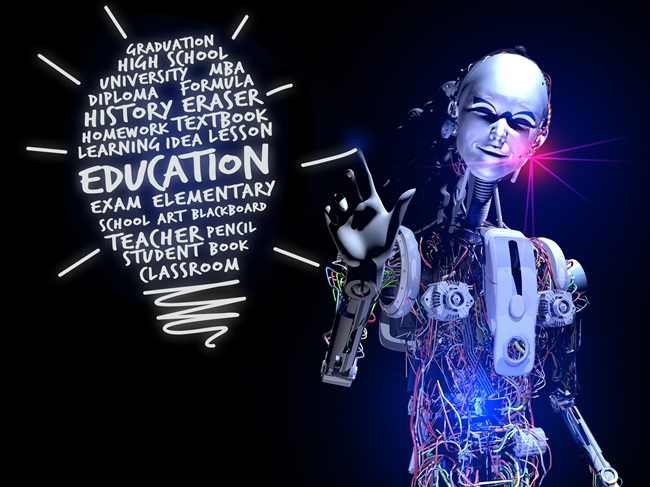Dec 15, 2025
Dec 15, 2025
by Renu Dhotre

As Artificial Intelligence (AI) takes center stage in the realm of education, its impact on English language teaching is both profound and transformative. While AI brings innovation and efficiency to language learning, the role of the teacher remains indispensable, creating a dynamic partnership that enhances the educational landscape.
1. AI as a Supportive Learning Companion: Personalizing the Language Journey
AI acts as a supportive learning companion, tailoring educational experiences to the individual needs of students. Personalized learning paths, adaptive assessments, and intelligent tutoring systems powered by AI enable students to progress at their own pace. However, the role of the teacher is crucial in guiding this personalized journey, understanding students' unique requirements, and providing additional support and context where needed.
2. Redefining the Teacher's Role: Facilitator and Mentor
In the era of AI, the teacher's role evolves from a traditional dispenser of knowledge to a facilitator and mentor. AI can efficiently handle repetitive tasks like assessing grammar and vocabulary, allowing teachers to focus on fostering critical thinking, creativity, and effective communication. Teachers become mentors who guide students through the intricacies of language acquisition, offering valuable insights, cultural context, and real-world applications.
3. Collaboration between AI and Teachers: Maximizing Learning Outcomes
The true potential of AI in English language teaching is realized through collaborative efforts with teachers. While AI excels in providing immediate feedback and data-driven insights, teachers bring the human touch—empathy, motivation, and the ability to understand the emotional and cultural nuances of language learning. This collaboration creates a holistic learning environment, combining the strengths of both AI and human educators to maximize learning outcomes.
4. Addressing Individual Learning Styles: A Tailored Approach
AI's ability to analyze vast amounts of data enables it to identify individual learning styles and preferences. Teachers can leverage this information to tailor their teaching methodologies, ensuring that each student receives a customized learning experience. Whether a student thrives through interactive conversations, visual aids, or written exercises, the combination of AI insights and teacher expertise allows for a more effective and engaging learning process.
5. Lifelong Learning and Professional Development: A Continuous Journey
For teachers, the integration of AI in English language teaching extends beyond the classroom. AI tools provide valuable data on student progress, allowing teachers to refine and adapt their instructional strategies continuously. Additionally, AI facilitates teachers' own professional development, offering insights into emerging linguistic trends, teaching methodologies, and technological advancements, ensuring educators remain at the forefront of language education.
Looking Ahead: The Synergy of Human and Artificial Intelligence
The future of English language teaching lies in the harmonious synergy between human educators and AI. While technology enhances efficiency, accessibility, and personalization, the unique qualities of teachers—empathy, cultural understanding, and adaptability—remain irreplaceable. As we navigate this transformative journey, it becomes clear that the most successful language education programs will be those that embrace the collaborative potential of AI and the enduring impact of dedicated, human educators. Together, they create a learning environment that not only equips students with language proficiency but also cultivates critical thinking, cultural awareness, and a lifelong love for learning.
Image (c) istock.com
30-Dec-2023
More by : Renu Dhotre